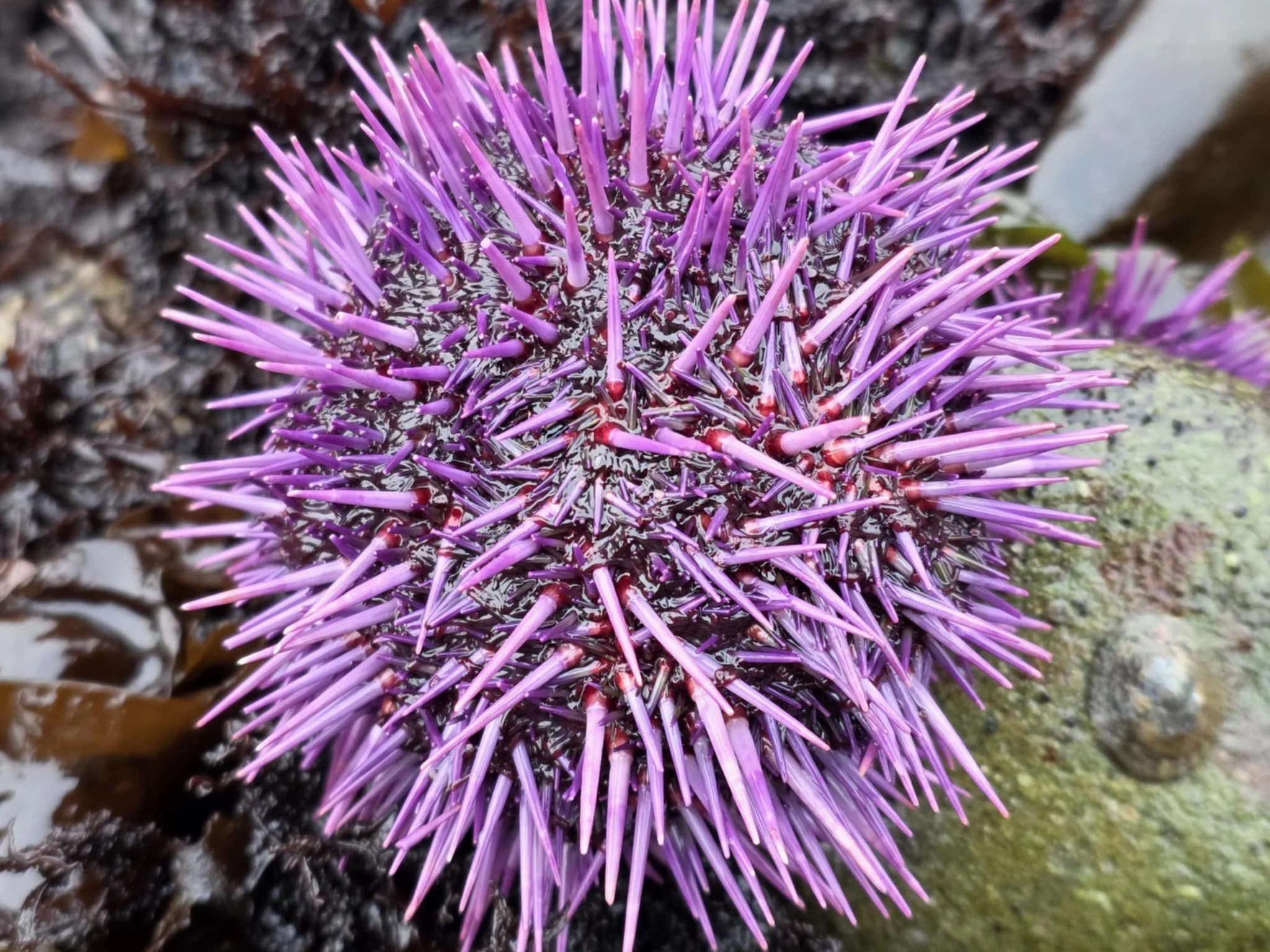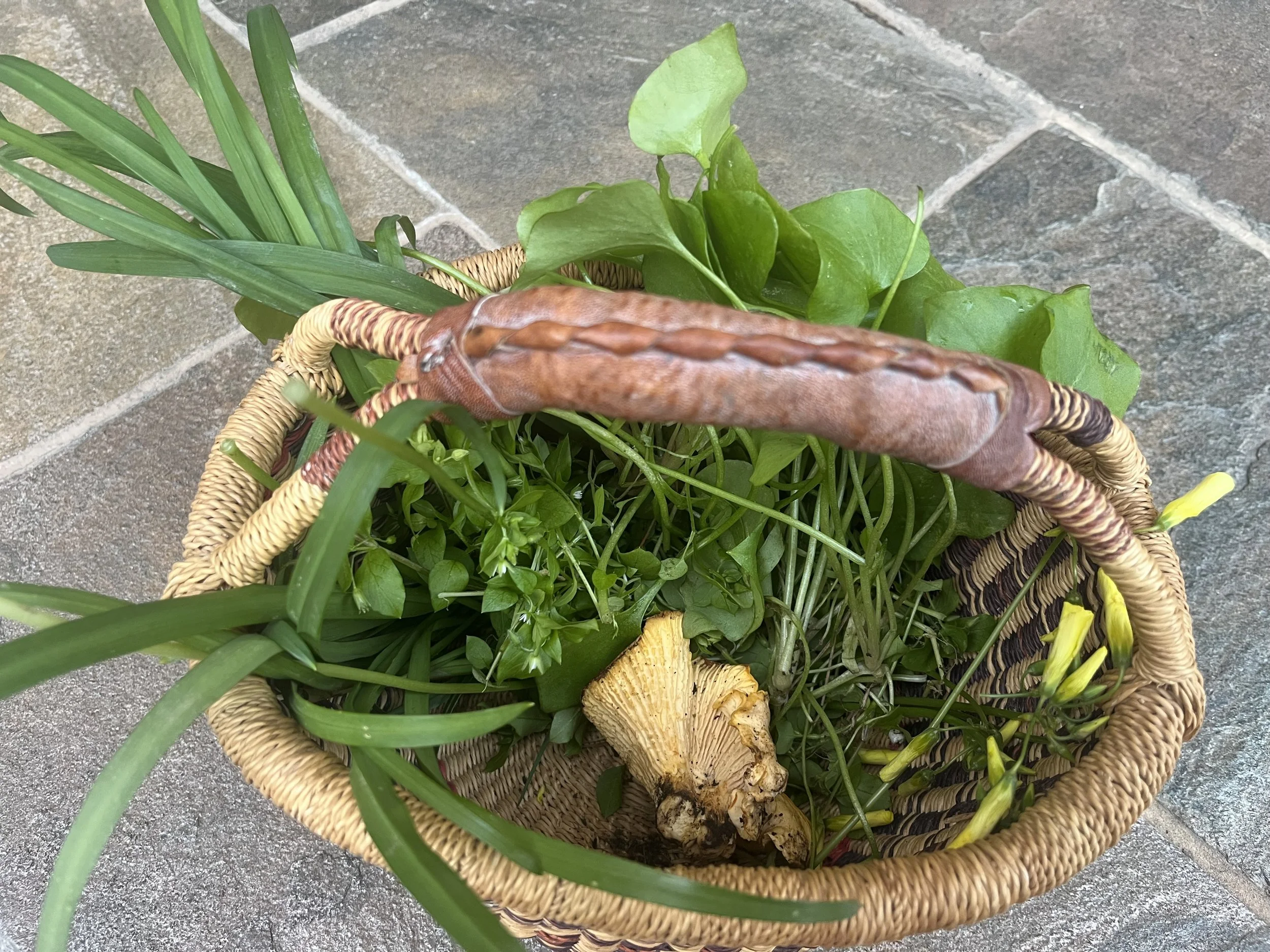Foraging in the SF Bay Area
Whether you’re in Oakland, Berkeley, San Francisco, Santa Cruz, Sonoma, or Marin, the San Francisco Bay Area is a remarkably diverse region offering a bounty of wild foods. While the act of foraging connects us deeply to these lands, it's crucial to do so respectfully, legally, and with guidance to ensure sustainability.
Seasons and What To Forage
Foraging opportunities shift with the seasons. Spring brings tender greens like chickweed, miner's lettuce, nettles, and cleavers. Mushroom foraging peaks with the winter rains (November-March), though lucky foragers might find some species year-round. Fall is prime time for bay nuts and acorns, while Summer and Fall are also ideal for berries, including abundant Himalayan and California Blackberries, thimbleberries, and huckleberries. Along the coast, mussels can be collected from November to April (always check CDFW for safety advisories!), while sea urchin is available year-round – and foraging it is actually beneficial due to overpopulation. Various seaweeds like nori and kombu are best harvested during the summertime on the Sonoma Coast.
Places To Forage
It's important to note that foraging for plants or mushrooms is not legal in any regional or state parks in San Francisco or the East Bay. For legal terrestrial foraging, you'll need to venture to designated areas. Popular mushroom options include Jackson State Demonstration Forest (requires a permit) and Salt Point State Park (has a 2lb limit per person per day), or Point Reyes National Seashore (has a one gallon + one mushroom limit per person per day). For marine foraging like mussels and urchins, a fishing license is required (a day license is around $20; an annual is approximately $60 and pays for itself after three trips).
Rules and Sustainable Practices
Always prioritize learning sustainable harvesting techniques. For plants and seaweed, proper cutting methods ensure the organism can continue growing. While foraging for mushrooms is like picking an apple, it doesn't harm the underground mycelium, but if you’re not planning to eat it, please leave it where you found it, spore-bearing surface (such as gills or pores) down; it likes growing in that spot. Taking sea urchins is encouraged due to their overpopulation's impact on kelp forests and abalone habitat. If you’re skin or free diving, you can take up to 40 gallons! But if you’re in the tide pools and on foot, you can take up to 35 individuals (with your fishing license). While you can forage for seaweed, urchin, and mussels once you’re in the water, it’s important to note that at coastal parks, it’s not legal to forage for any plants or mushrooms, except for Salt Point. You can get involved in Reef Check’s restoration projects. Never forage anything without an experienced guide until you are confident in identification and sustainable practices.
Hazards
Venturing into nature always comes with potential risks. Be highly vigilant for poison oak, which is prevalent throughout the Bay Area; learn to identify its "leaves of three" and take precautions. Ticks are also a common concern, so wear long pants and check yourself thoroughly after being in grassy or wooded areas. Beyond plant and insect hazards, the risk of getting lost is a serious concern, especially when exploring new or dense areas. Use a GPS or mapping app such as Gaia, Onyx, Avenza, Caltopo, or AllTrails that works in or out of reception, and inform someone of your planned route and expected return time. Many more rural parts of the Bay Area do not have good cell reception, so do not count on it. The weather can change quickly, so dress in layers and be prepared for varied conditions. Safety should always be your top priority.
Restaurants that Serve Foraged Foods
To taste wild foods prepared by experts, explore local establishments. Look for restaurants known for seasonal and local ingredients, such as Wahpepah’s Kitchen in Oakland, Revival in Berkeley, or Benchmark Pizza in Kensington, which often feature foraged items on their menus.
Learn
Beyond Fork in the Path classes, you can engage with the foraging community through local events. The Tilden Fungus Fair and the Exploratorium's Fungi After Dark, and the California Native Plant Society are excellent opportunities to learn and connect with fellow enthusiasts.
Acknowledging Indigenous Lands
The San Francisco Bay Area is the ancestral and traditional lands of the Ohlone, Kashia Pomo Band of Indians, Ramaytush, Karkin, Chochenyo, Tamien, Patwin, Coastal Miwok, and Graton Rancheria. We acknowledge these Indigenous peoples who have stewarded this land for generations, and whose deep knowledge of its bounty continues to inform our understanding and respect for nature. Examples of local projects you can get involved with are the Sogorea Te Land Trust, the Bioneers Indigeneity Program, and the Walqaqsh Native Seed Store.





